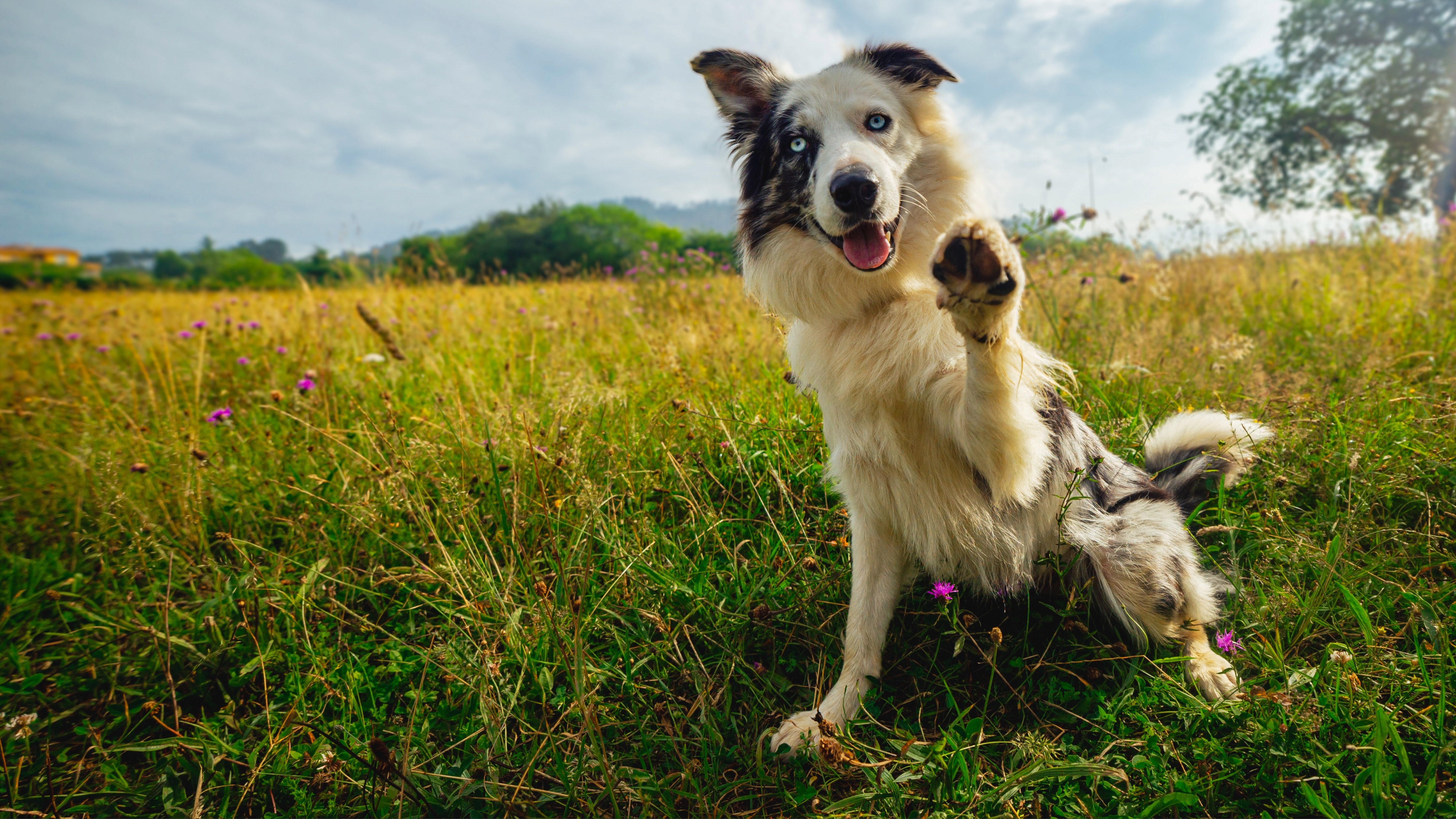
Have you always wanted to learn how to read dog body language? Well, you’re in luck because you’ll find everything you need to know (plus a whole lot more!) in this guide.
Understanding what our canine companions are trying to tell us can feel more than a little complicated some days, but it doesn’t have to be. Whether your fur friend is barking with excitement because they want you to throw them one of the best dog toys or they’re growling because they’re feeling scared, you’ll soon be a pro at reading dog body language.
A lot of canine communication consists of sounds (such as barking, growling, or whining), movement (things like tail-wagging or moving away), and facial expressions (such as yawning or lip-licking) so having a good grasp on what all of these mean is one of our favorite ways to for improving your relationship with your dog.
To help you become a master of dog body language, we turned to expert vet Dr. Rebecca MacMillan. Below, she explains how dogs communicate with humans and with other canines, plus we reveal the signs to lookout for that will tell you whether your dog is happy, excited, fearful or anxious.
How do dogs communicate with humans?
Why do dogs have tails? Well, one big reason is so they can communicate with us humans!
"Dogs communicate with humans by using their body in a variety of ways," says Dr. MacMillan. "The most obvious one is tail posture. The majority of people can instantly recognize a happy dog with its relaxed open mouth and wagging tail. But a stiff tail, held high in the air can be a signal to us that a dog is feeling alert, or tense and a tail tucked between the legs can indicate your pet is fearful.
Eye contact is also an important method of communication that dogs use with humans. A dog that is looking towards you is showing trust, a hard stare can be a sign of aggression and a dog that is avoiding any eye contact or showing the whites of their eyes may be fearful or anxious.
It is important to recognize some of these subtle cues as if the dog continues to feel scared or threatened, they will start to escalate their behavior. This could result in raising their lips, growling, and even biting."
How do dogs communicate with other dogs?
"As well as scent marking and pheromones, dogs communicate to other dogs with their body posture," Dr MacMillan explains. "A dog that is trying to make themselves look big may stand in a confident and exaggerated stance, with their tail high in the air. They may even raise the hair on the back of their neck (their hackles) if they are feeling threatened by the situation.
A submissive dog on the other hand will usually carry their head low, roll over to show their tummy, and tuck their tail tightly between their legs.
When dogs are relaxed and invite each other to play they will often do a play bow, with their front end on the floor and bottom high in the air. This is often accompanied by open-mouth panting or excited barking."
How to read dog body language
Thankfully all that canine pheromone data goes completely over our human heads, but if you want to get a good fix on what sort of mood your mutt's in right now, here's a run-down of the five main doggy moods, and how to identify them through its body language.
1. Happy and relaxed body language
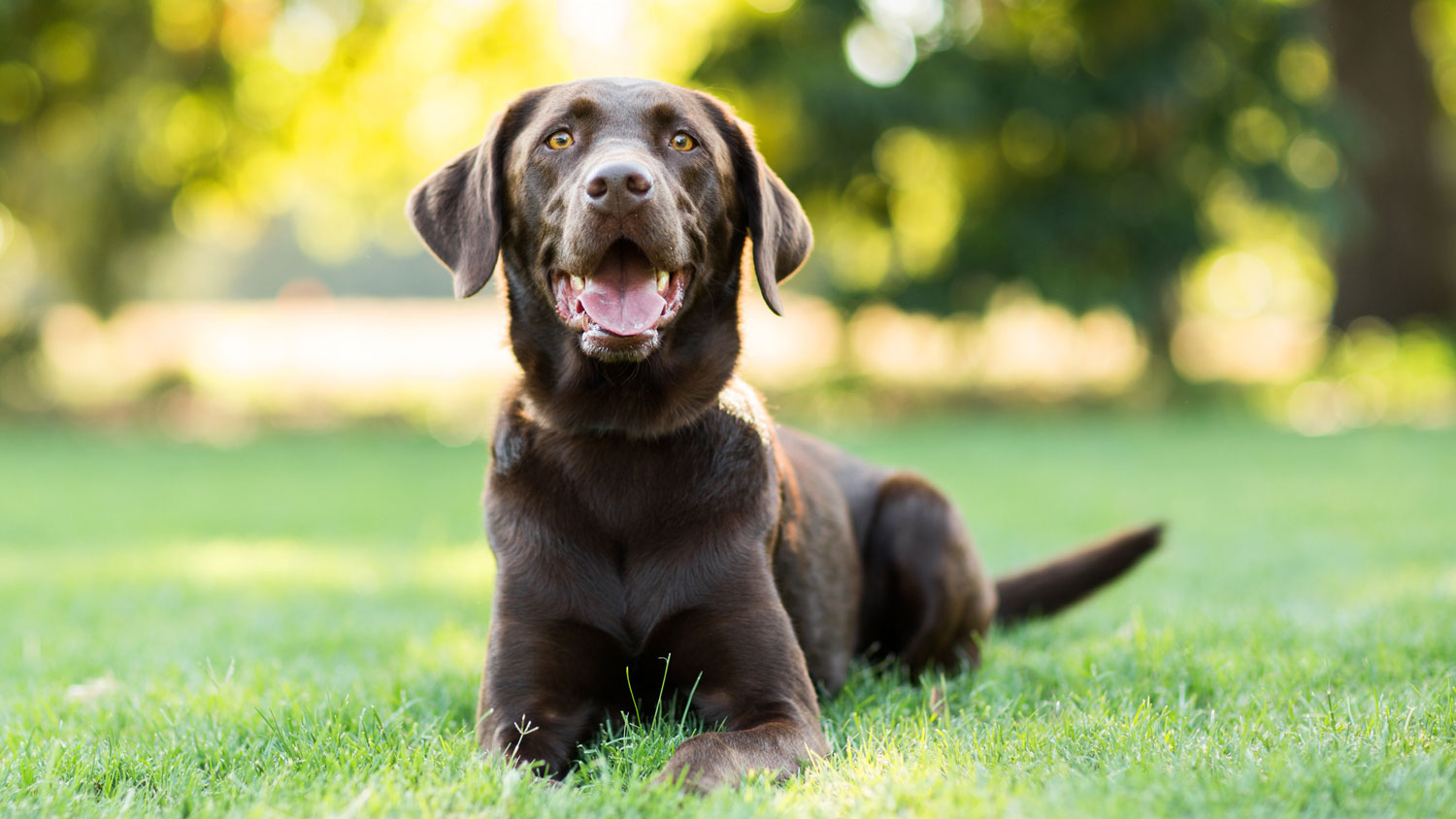
A dog that's in a relaxed and happy mood should be a familiar sight for most owners, and the signs will be visible across its entire body. Look out for:
- Body posture: relaxed with a loose stance, with its weight distributed between all four paws. Fur flat and smooth.
- Head: held high, with an interested and alert face, a slightly open mouth with perhaps the tongue slightly out. Ears up (but not pointing forward) and eyes in their normal shape.
- Tail: Either down and relaxed, or wagging from side to side.
2. Playful and excited body language
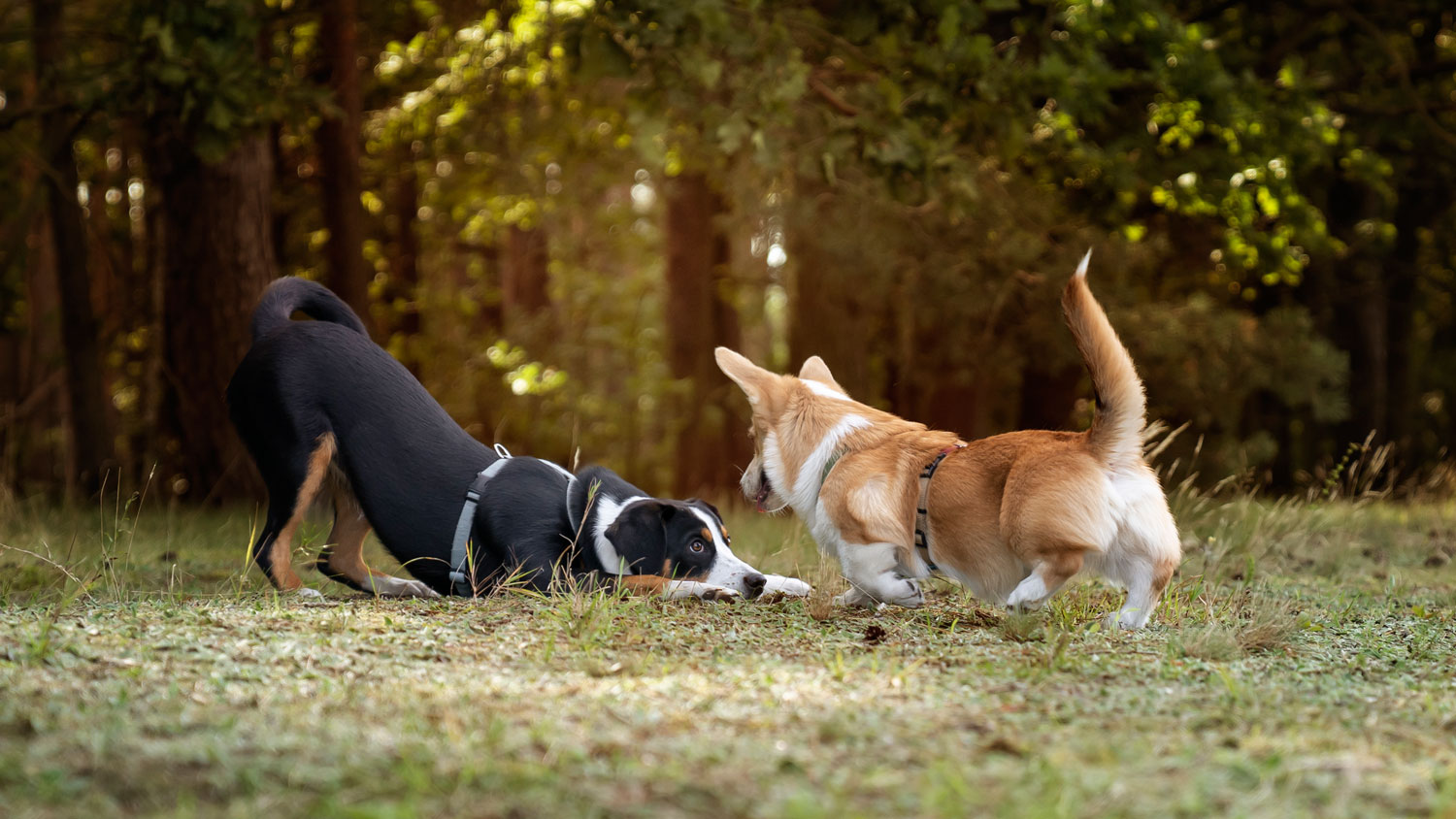
Spotting a dog that's in a playful and excited mood can be just a little tricky, because its body language could be misinterpreted as being either happy or aggressive.
But if you look for all the signs then you should find it easy to conclude when your pooch is up for a game.
- Body posture: front end down and rear end raised, with forepaws flat on the ground. Fur flat and smooth.
- Head: down, with an open mouth and maybe the tongue hanging out, possibly barking excitedly. Ears up, and wide eyes with dilated pupils.
- Tail: up, and probably wagging.
3. Aggressive body language
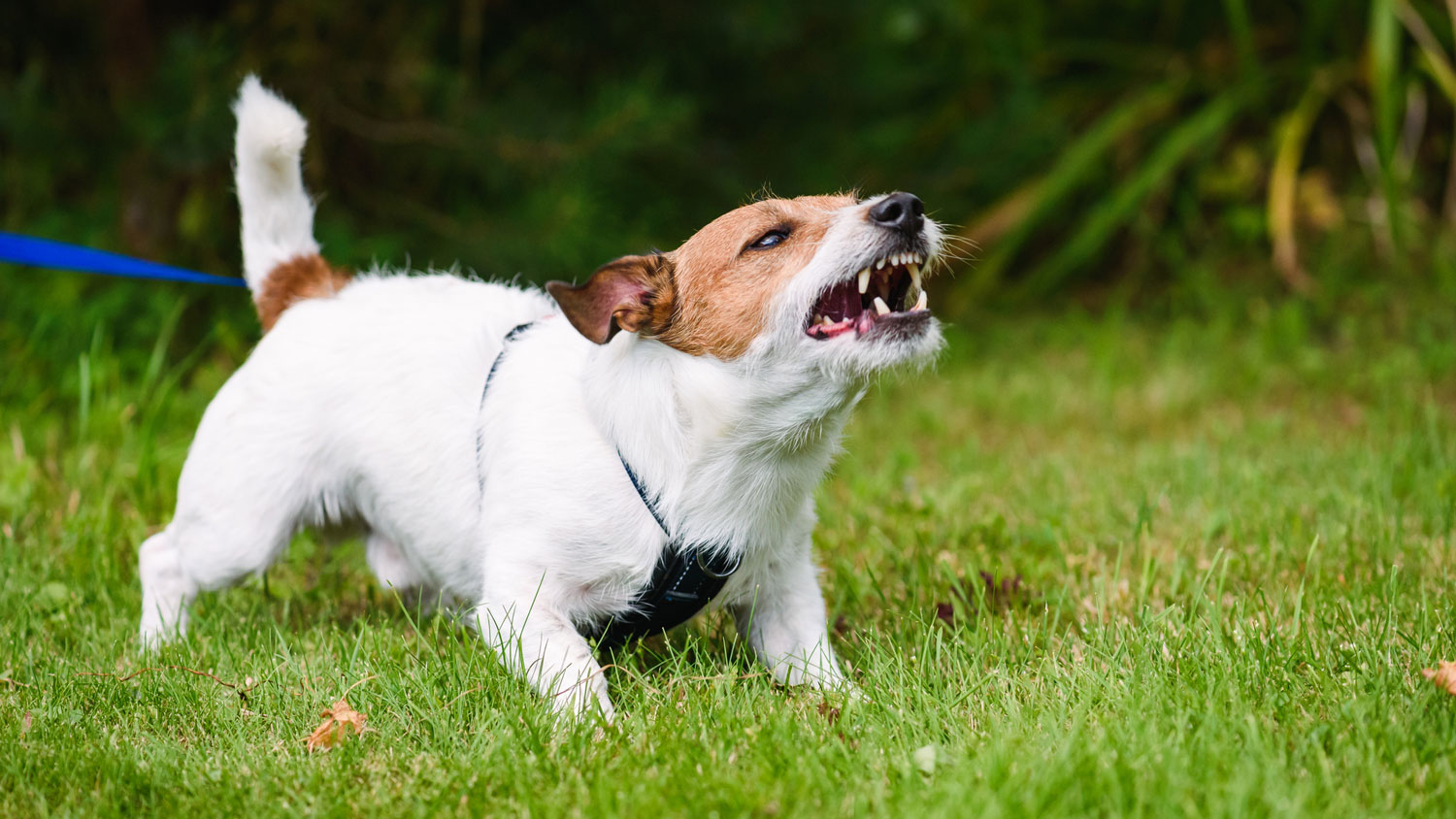
The type of aggressive body language you may see in a dog will depend on how confident it feels in a threatening situation; a more dominant dog will behave differently to a fearful dog.
In both cases, however, they're readying themselves to attack if necessary, so watch out for the signs:
- Body posture: a dominant dog will stand straight, leaning slightly forward, with a very stiff-legged stance, while a fearful dog will hold its body much closer to the ground. In both cases, though, their hackles – the fur around their shoulders and down towards the base of the tail, will be visibly raised.
- Head: in a dominant dog its head will looking straight forward, with its lips curled and its teeth (and maybe its gums) bared, and its ears forward and alert. With a submissive dog you'll see its head down and its lips slightly curled, perhaps showing some teeth, and its ears will be right back. Both dogs, however, will have dilated pupils and a wrinkled nose (and possibly forehead too).
- Tail: a dominant dog that's ready to fight will have a tail that's raised and stiff (and potentially quivering), with bristled fur. A fearful dog, on the other hand, will have its tail tucked firmly between its legs.
If your dog is showing aggressive behavior we highly recommend speaking with your vet or a qualified trainer or behaviorist. You may also find this guide to how to handle dog aggression a helpful starting place.
4. Fearful body language

Your dog's behavior when it's feeling fearful will depend on just how scared it is, and on whether it's scared enough to become completely submissive.
A scared or worried dog will hold itself close to the ground, while a submissive dog is more likely to roll completely on its back with its belly and throat exposed. Here's what else to look out for:
- Tail: a scared dog's tail will be down, but may wag slightly as a non-threatening sign in order to avoid a fight. A terrified, submissive dog will have its tail completely tucked.
- Body posture: lowered or flat on the ground, as mentioned. A merely scared dog may have a front paw raised as a sign of submission, and it may leave sweaty pawprints on the floor. A terrified and submissive dog, on the other hand, might squirt out a bit of pee as a submissive sign.
- Head: scared dogs will tend to avoid eye contact and maybe keep their eyes partly closed. Similarly they'll keep their mouths mostly closed with the corner of the mouth back. Their noses and foreheads will be flat, not wrinkled, and in both cases ears will be back, but in a terrified and submissive dog the ears will be completely flat.
5. Anxious body language
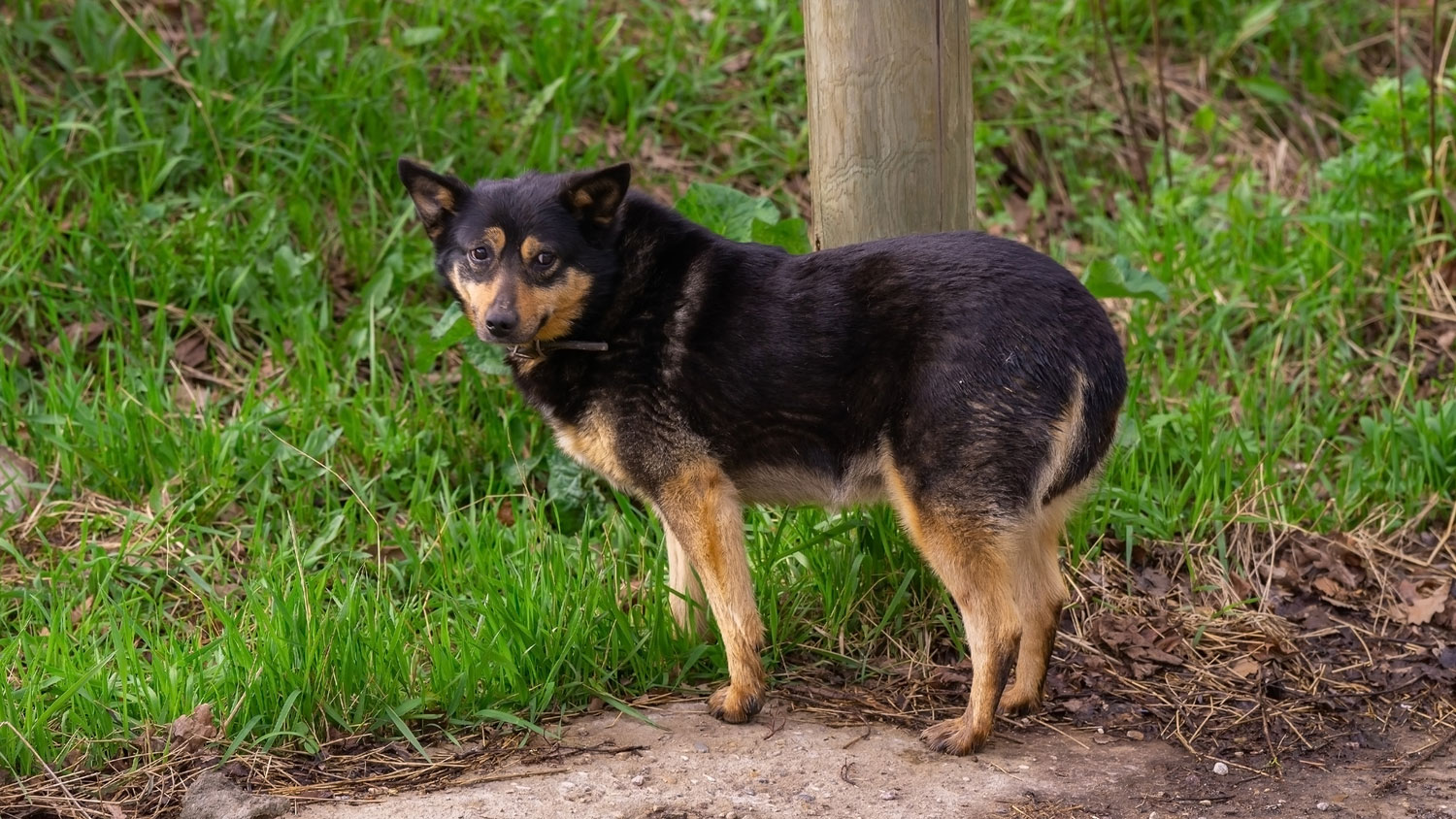
Anxiety in dogs is more common than you might think and is a signal that a dog is feeling stressed, either for social or environmental reasons. The signs you may see in an anxious dog aren't aimed at any particular individual; rather they're a general indicator of its current state of mind, and send a clear message that they'd rather be left alone. Here's what to look out for:
- Body posture: low to the ground, either standing, sitting or lying down.
- Head: likely lowered and avoiding eye contact or completely looking away, with ears back. The mouth may be closed, or the dog may be nervously licking its lips or even yawning.
- Tail: either low or tucked completely away.
How do you know if your dog loves you?
There are so many ways your dog shows they love you and while some of them are subtle, according to Dr. MacMillan, most of the time the way your canine companion chooses to communicate their love makes it pretty clear that they adore you!
"It is often very obvious when your dog loves you! They will greet you enthusiastically with a wagging tail and wiggling bottom. They will also want to stay close to you, with some dogs leaning against you as a form of affection," she explains.
"Dogs will also show love by bringing you items, like toys. This is their way of getting your attention and engaging you in play. Your dog may also nuzzle in towards you or nudge your hand with their head, especially if they want to be petted. And of course, dog kisses are a big sloppy show of affection too!"
Looking for more great canine content? Here's 32 things you only know if you're a dog owner.







